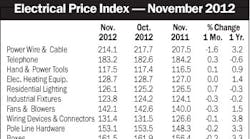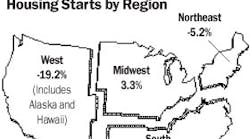Latest from Mag
Nanosolar Begins Utility Panel Output
One of the more intriguing players on the solar stage finally unveiled a bit more of its plans to dominate the solar market. Backed by a group of high-profile investors that includes Google co-founders Sergey Brin and Larry Page, Nanosolar, San Jose, Calif., first tantalized solar enthusiasts in 2006 with a glimpse of its innovative thin-film photovoltaic cells, which could be printed with a proprietary ink on inexpensive metal foil.
The company has offered few details on its progress and has spent the past few years quietly refining the technology. This week, Nanosolar stepped out of the shadows into the solar spotlight with two announcements: that it had begun mass production of its Nanosolar Utility Panel, which it promotes as the industry’s first solar electricity panel specifically designed and developed for utility-scale solar power system deployment; and that it had smashed several records for converting sunlight into electricity.
According to the company’s blog, www.nanosolar.com, a fully-automated factory near Berlin in Luckenwalde, Germany, can produce the panels at a rate of one every ten seconds, or an annual capacity of 640MW when operated 24x7.
“Production is presently set at approximately one MW per month,” said a posting on the blog. “As Nanosolar’s customers attain project financing from commercial banks for the new panel product, the company will increase its monthly production rate to deliver on its contractual customer commitments totaling $4.1 billion to date.”
In a Sept. 9 post on the company’s blog, Martin Roscheisen, Nanosolar’s CEO, said the company’s latest PV cells had been certified to a record 16.4 percent efficiency by the National Renewable Energy Laboratory in Golden, Colo. “It was May 2006 when we last released information about our power-conversion efficiencies to the public (for a cell sample on glass actually back then). We have made a lot of progress since then; so an update is appropriate. Our lab and production teams have managed to make more progress on efficiency than we had planned on in any of our business plans.
“Recall that we print CIGS (copper indium gallium (di)selenide) onto inexpensive metal foil, that is, something that some have been skeptical can work, while others have been wondering whether it can deliver efficient cells.
“So we are pleased to announce that our low-cost printed-CIGS-on-metal-foil cell stack and process produces quite efficient cells: Earlier this year, NREL independently verified several of our cell foils to be as efficient as 16.4 percent. At 16.4 percent efficiency, our foil cells represent two world records in one: It’s the most efficient printed solar cell of any kind (all semiconductor and device technologies) as well as the most efficient cell on a truly low-cost metal foil (with a material cost of only a cent or two per square foot and mil thickness).”
According to a report on the Green Wombat blog published by The New York Times, the Nanosolar PV cells utilize “semiconducting materials and nanoparticles contained within a proprietary ink that makes it possible to print flexible solar cells on rolls of cheap aluminum foil.” The Green Wombat also said that since being founded in 2002, Nanosolar has been fueled by $500 million in investment cash but “has been a bit vague on specifics about why it’s the next big green thing.”
Nanosolar’s arch-rival First Solar also made news this week with its announcement that it had signed a memorandum of understanding with the Chinese government to build a 2 gigawatt solar power plant in Ordos City, Inner Mongolia, China.

